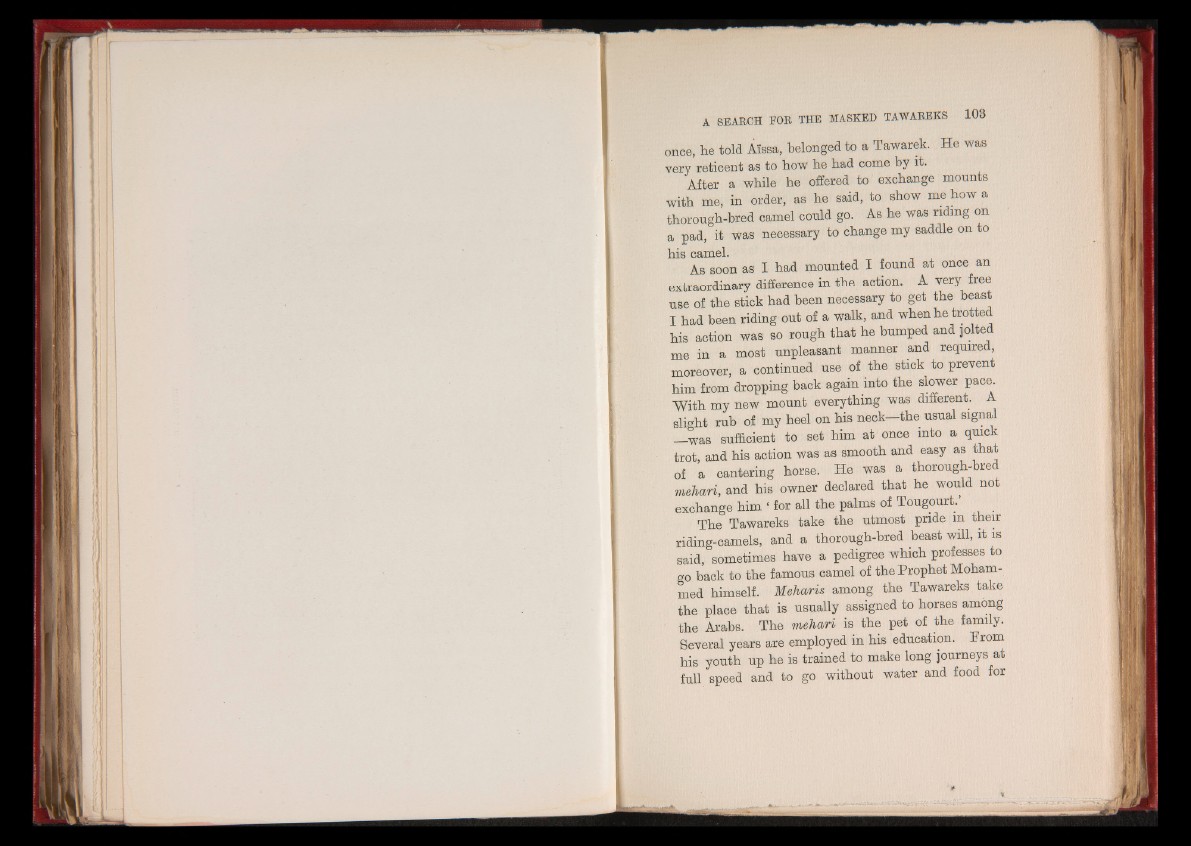
once, he told Aissa, belonged to a Tawarek. He was
very reticent as to how he had come by it.
After a while he offered to exchange mounts
with me, in order, as he said, to show me how a
thorough-bred camel could go. As he was riding on
a pad, it was necessary to change my saddle on to
liis ca»HL6l.
As soon as I had mounted I found at once an
extraordinary difference in the action. A very free
use of the stick had been necessary to get the beast
I had been riding out of a walk, and when he trotted
his action was so rough that he bumped and jolted
me in a most unpleasant manner and required,
moreover, a continued use of the stick to prevent
him from dropping back again into the slower pace.
With my new mount everything was different. A
slight rub of my heel on his neck the usual signal
—was sufficient to set him at once into a quick
trot, and his action was as smooth and easy as that
of a cantering horse. He was a thorough-bred
mehari, and his owner declared that he would not
exchange him ‘ for all the palms of Tougourt.
The Tawareks take the utmost pride in their
riding-camels, and a thorough-bred beast will, it is
said, sometimes have a pedigree which professes to
go back to the famous camel of the Prophet Mohammed
himself. Meharis among the Tawareks take
the place that is usually assigned to horses among
the Arabs. The mehari is the pet of the family.
Several years are employed in his education. From
his youth up he is trained to make long journeys at
full speed and to go without water and food for